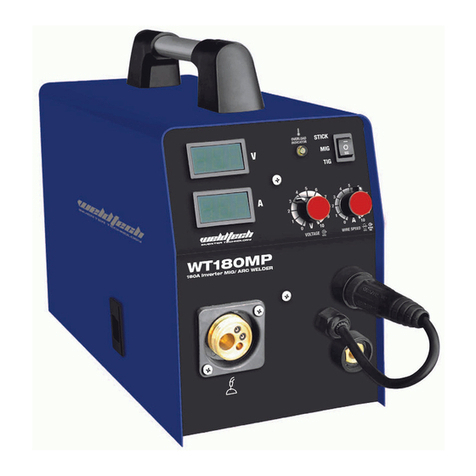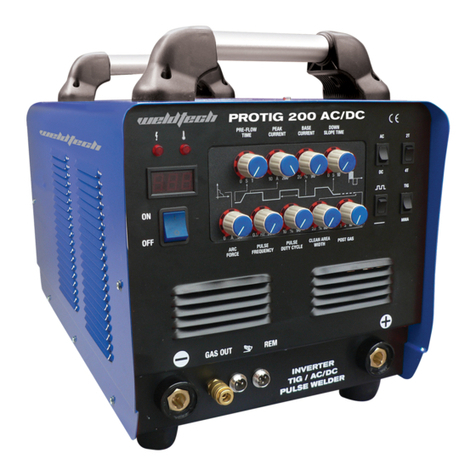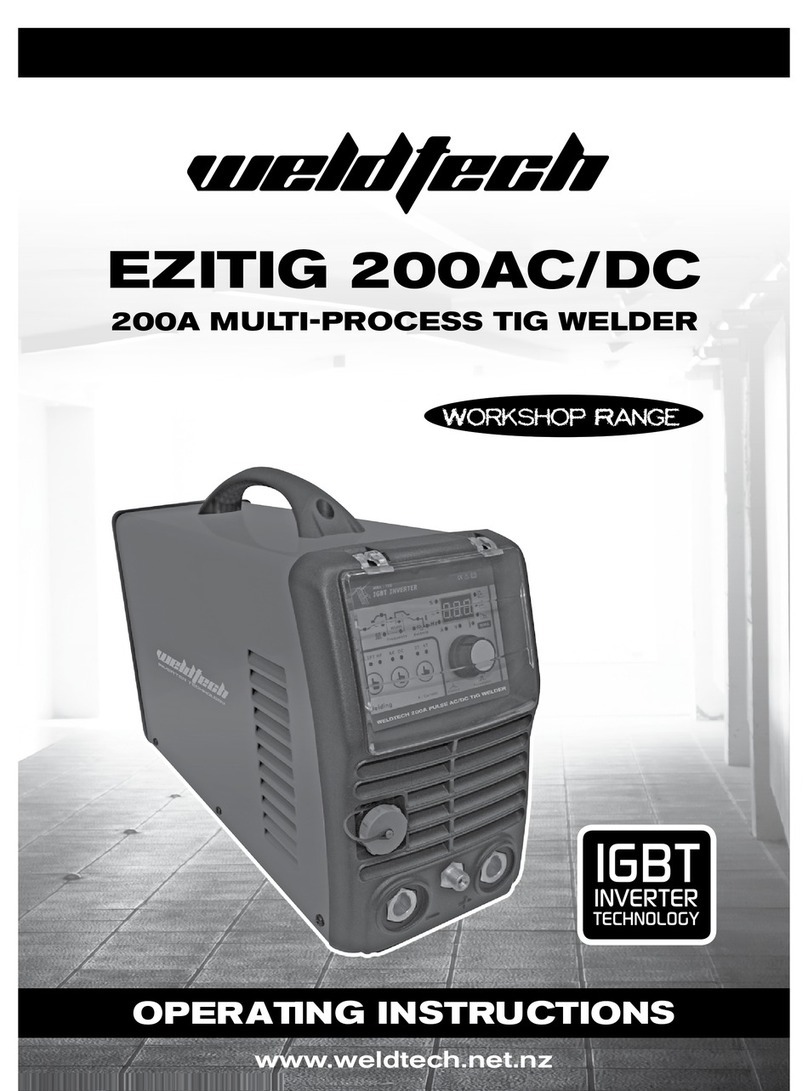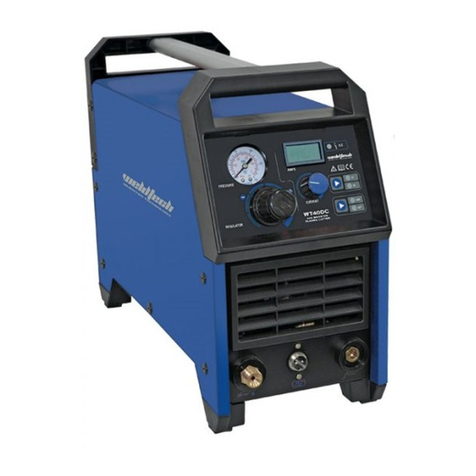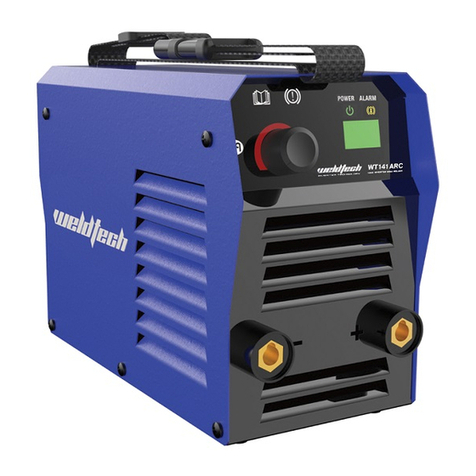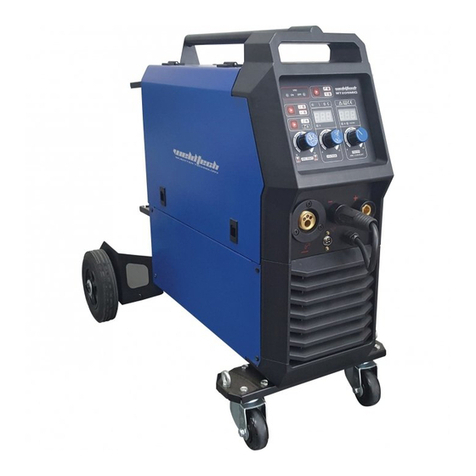10
Arc Welding Techniques
- A Word for Beginners
Forthose whohavenotyetdone anywelding,the
simplest way to commence is to run beads on a piece
ofscrapplate.Usemildsteelplateabout6.0mmthick
and a 3.2mm electrode.
Clean any paint, loose scale or grease o the plate and
set it rmly on the work bench so that welding can
becarriedoutinthedownhandposition.Makesure
thattheWorkLead/Clampismakinggoodelectrical
contact with the work, either directly or through the
work table. For light gauge material, always clamp
the work lead directly to the job, otherwise a poor
circuit will probably result.
The Welder
Place yourself in a comfortable position before be-
ginning to weld. Get a seat of suitable height and
do as much work as possible sitting down. Don’t
hold your body tense. A taut attitude of mind and
a tensed body will soon make you feel tired. Relax
and you will nd that the job becomes much easier.
You can add much to your peace of mind by wearing
a leather apron and gauntlets. You won’t be worry-
ing then about being burnt or sparks setting alight
to your clothes.
Place the work so that the direction of welding is
across, rather than to or from, your body. The elec-
trode holder lead should be clear of any obstruction
so that you can move your arm freely along as the
electrode burns down. If the lead is slung over your
shoulder, it allows greater freedom of movement
andtakesalotofweightoyourhand.Besurethe
insulation on your cable and electrode holder is not
faulty; otherwise you are risking an electric shock.
Striking the Arc
Practice this on a piece of scrap plate before going
on to more exacting work. You may at rst experi-
ence diculty due to the tip of the electrode “stick-
ing”totheworkpiece.Thisiscausedbymakingtoo
heavy a contact with the work and failing to with-
draw the electrode quickly enough. A low amper-
age will accentuate it. This freezing-on of the tip may
be overcome by scratching the electrode along the
plate surface in the same way as a match is struck. As
soon as the arc is established, maintain a 1.6mm to
3.2mm gap between the burning electrode end and
the parent metal. Draw the electrode slowly along
as it melts down.
Another diculty you may meet is the tendency, af-
ter the arc is struck, to withdraw the electrode so far
that the arc is broken again. A little practice will soon
remedy both of these faults.
20o
1.6mm(1/16”)
Striking an Arc
(Fig 1-20)
Arc Length
The securing of an arc length necessary to produce a
neat weld soon becomes almost automatic. You will
nd that a long arc produces more heat.
A very long arc produces a crackling or spluttering
noise and the weld metal comes across in large, ir-
regular blobs. The weld bead is attened and spatter
increases. A short arc is essential if a high quality weld
is to be obtained although if it is too short there is the
danger of it being blanketed by slag and the elec-
trode tip being solidied in. If this should happen,
give the electrode a quick twist back over the weld
todetachit.Contactor“touch-weld”electrodessuch
asE7014Stickelectrodesdonotstickinthisway,and
make welding much easier.
Rate of Travel
After the arc is struck, your next concern is to main-
tain it, and this requires moving the electrode tip
towards the molten pool at the same rate as it is
melting away. At the same time, the electrode has to
move along the plate to form a bead.
The electrode is directed at the weld pool at about
20º from the vertical. The rate of travel has to be ad-
justed so that a well-formed bead is produced.
If the travel is too fast, the bead will be narrow and
strung out and may even be broken up into individ-
ual globules. If the travel is too slow, the weld metal
piles up and the bead will be too large.

